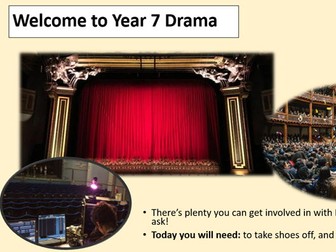KS3 Drama SOW Introduction to Acting Skills
<p>Here is a KS3 Scheme of Work/ Programme of Study for introducing Acting Skills to a Year 7 cohort. The programme is designed to last 6 to 8 weeks and is filled with fun and engaging tasks to help students begin their journey into physical and vocal acting skills.</p>
<p>All 57 slides are structured task by task allowing for flexibility depending on the learning pace of the cohort. The program includes support for learners with Special Educational Needs and Disabilities (SEND), teaching resources, references to booklet activities, homework activities and more. There is a workbook for students to accompany the PowerPoint, which was implemented to show evidence of teaching and learning. It is packed with tasks to accommodate all levels of learning and interaction. This project is taught in Year 7 but is suitable for KS2 as well.</p>
<p>The PowerPoint presentation is easy to read, uncluttered, and provides clear direction, making it ideal for non-specialist teachers or those new to teaching. Supporting notes are included with the slides where necessary. Minimal adaptation should be required. There is a grading system included but may need to be changed depending on your own assessment policy.</p>
<p>The tasks are as follows:</p>
<ol>
<li>Introduction to Drama and the 6 C’s (Being confident, communicating, creative, etc).</li>
<li>How am I assessed in Drama.</li>
<li>Mime and Gesture game.</li>
<li>What are physical and vocal acting skills?</li>
<li>Voice sculpting.</li>
<li>Homework Task – Welcome to Drama, getting to know you.</li>
<li>What is a Tableau and what does it look like in action.</li>
<li>Purpose of Hot Seating and seeing it in action.</li>
<li>What is Given circumstances?</li>
<li>Assessing performances using a Grading Descriptor.</li>
<li>Role on the wall.</li>
<li>Annotation a short script and bringing it to life.</li>
<li>Homework Task – Role on the Wall.</li>
<li>Final assessment, planning a final performance.</li>
<li>Peer evaluation with teacher feedback slip</li>
<li>Project Evaluation</li>
</ol>
<p>These materials were created by a non-specialist educator with dyslexia, who was tasked with teaching a few hours a week from a complex scheme of work in a department with limited or no resources. Over the past 6 years, PowerPoint teaching resources have been developed to support non-specialists and new teachers, and more recently, work booklets have been introduced to support theory-based learning and evidence of teaching.</p>



